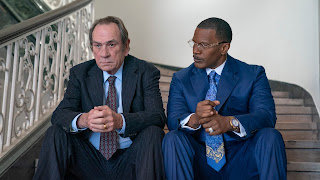50 Shades of Controversy
"Christian's and Ana's relationship, clearly, is predicated on an abusive power differential. Even when the two are not engaged in sadomasochistic sex, their dynamic is fraught with a sense of domination and subjugation—of predator and prey." — Paul Asay, "PluggedIn.com"
A little movie, "50 Shades of Grey," opened on Friday, and it's seemingly set the world on fire. Of course, this is nothing new for "50 Shades." The first in a trilogy of books, written by E.L. James, was released in 2011. Since then, the trio of stories centered on a virginal heroine, her dark suitor, and their unconventional love story has sold more than 100 Million copies.
When it was announced that "50 Shades" would become a movie, that started the firestorm all over again. Every aspect of casting, directing, and production was analyzed to death on the Internet by fans. But the real fight and discourse has been the past three weeks leading up to the release.
While "50 Shades" was setting records on Fandango for pre-sale tickets for an R-rated film, and fans have been salivating about the chance to go — probably more than once — many others have been in a tizzie. An onslaught has risen up about the content of the film — particularly its depiction of abuse, an abuser, and what it says about women who've suffered this kind of abuse.
I haven't read the book, and I probably won't. No matter what else it is, it's not a book that's aimed at me or particularly interests me. But I did see the movie, and I sometimes wonder if people haven't gone a little overboard in castigating the film and its story.
Is it a good story? Not really. Does it depict a healthy relationship? No. Is it the worst, most demeaning film in history? No, it's certainly not. What separates "50 Shades of Grey" from other cultural entries is its wild popularity in literary form — particularly among women — and its lack of prestige as a film. Let me explain.
In December 2013, "The Wolf of Wall Street" was released. It's a film that runs three hours and is based on a true story — that also happens to be a popular non-fiction book. It's depiction of male-female relationships is deplorable, particularly the central "romance." In fact, the book is even worse. Those who've read the book will realize that director Martin Scorsese toned down the events from the book a bit to provide what feels like a few more consequences for the main character, a real man named Jordan Belfort.
In the book and film Jordan is nothing short of abusive to his wife, and in very destructive ways. He has man affairs, and engages in verbal and sometimes physical abuse. In the film, the final straw for her is when he hits her and nearly injures their daughter in a car crash while high. In the book, however, she forgives him for that.
The story in "The Wolf of Wall Street" doesn't tell it so much as a cautionary tale — though there's some of that element in the film. In the book, it feels more like bragging. And it's a book that runs 500 pages. And, again, it's a true story — unlike the fictionalized events in "50 Shades," which are primarily meant as escapist fantasy.
So how did people react to "The Wolf of Wall Street?" While there were some who complained about the content of the story, the film was actually nominated for Best Picture, among many other awards nominations, and considered one of the best of the year.
And that's hardly the first example of a production that depicts rough sex or is demeaning to women that happens each year in our entertainment industry. Slasher films — which frequently depict the victimization and brutalization of innocent young women — have been a staple at the American multi plea for years. And, what's worse, is the biggest percentage of people that pay to see those movies are women, age 18-34, better known as the group that's depicted on screen as the victims.
"50 Shades of Grey" the film features difficult content and some explicit sex scenes, but it's hardly the first or only to do that. Some of our most popular TV shows feature graphic sex scenes, often in a fashion that's abusive or demeaning to women. Last year, "Game of Thrones," HBO's signature series, featured as scene in which a brother appeared to rape his sister, who is his long-time lover, beside the coffin of their deceased son. There was some outcry, but nothing like the onslaught against James' work.
In fact, "50 Shades" isn't even the first movie to depicts a BDSM relationship on screen. In 2002, James Spader and Maggie Gyllenhaal starred in a film called "The Secretary" which featured a very dark and unsettling relationship between another Mr. Grey and a vulnerable woman in his employ. While some protested, that film is largely seen as helping launch the career of Gyllenhaal. And Spader seems to be doing just fine, too.
In fact, Spader is a repeat offender. He had a starring role in "Sex, Lies, and Videotape," as well as a somewhat disturbing film called "Crash" about adults who are turned on sexually by horrific car wrecks.
Does that make the content of "50 Shades of Grey" better? No, but it certainly puts it in perspective. The difference between "50 Shades of Grey" and these others is that's an easier target of opportunity. I don't mind people taking a stand against things they find offensive, but a little consistency would be nice.




Comments
Post a Comment